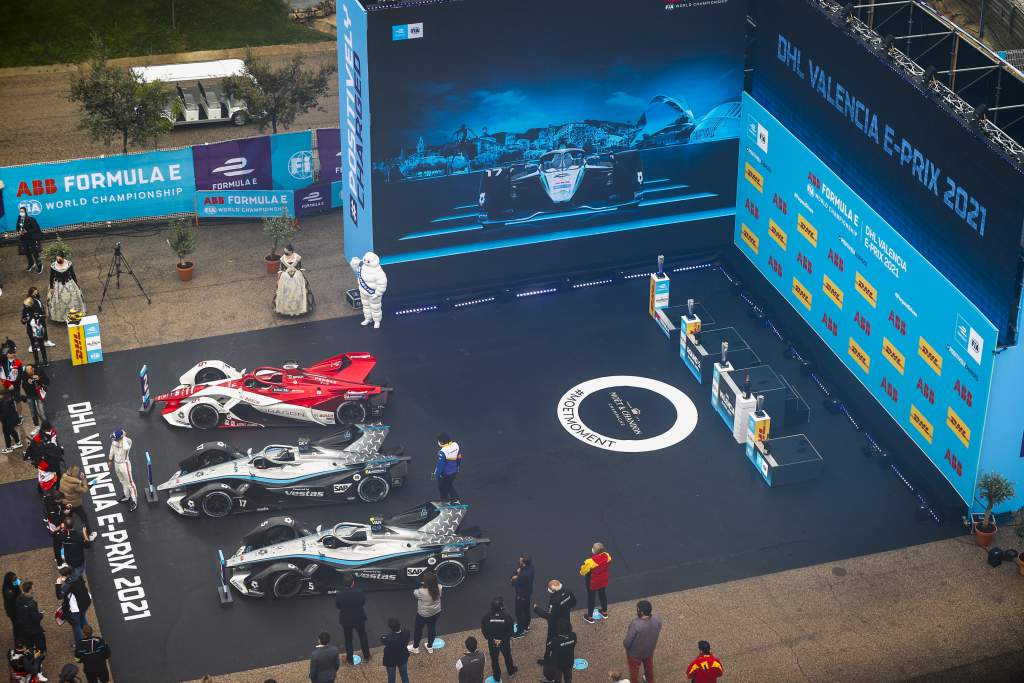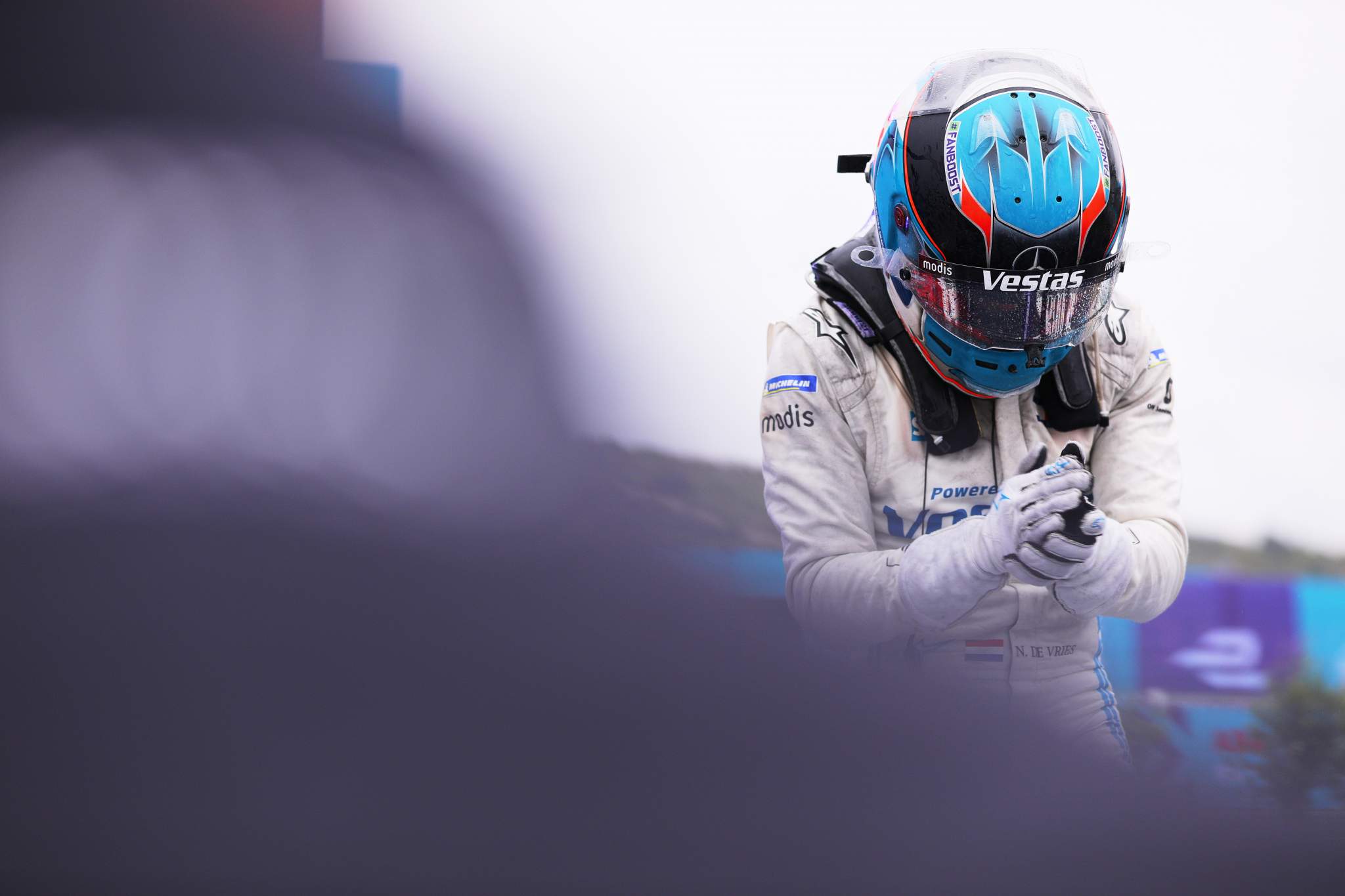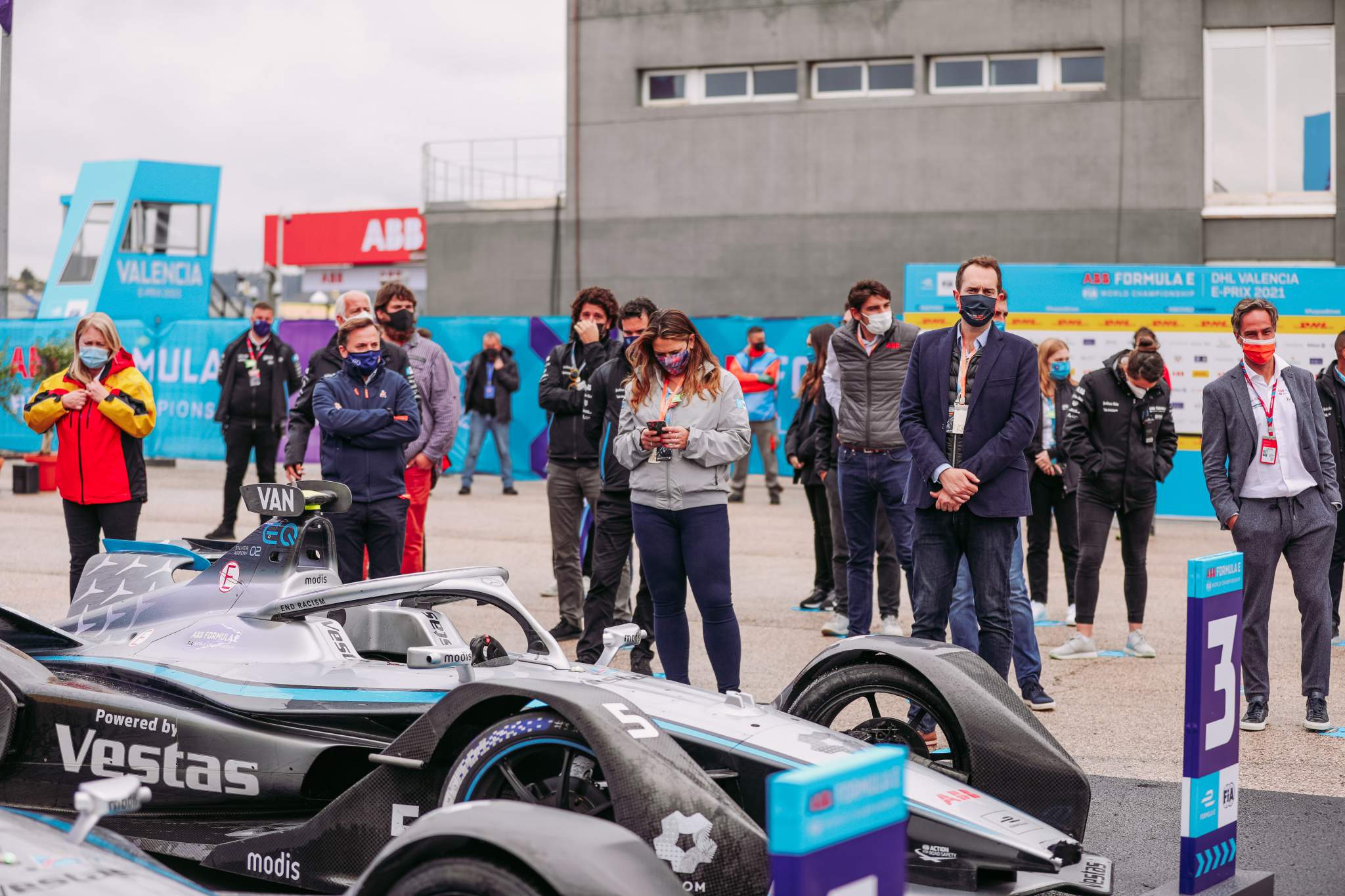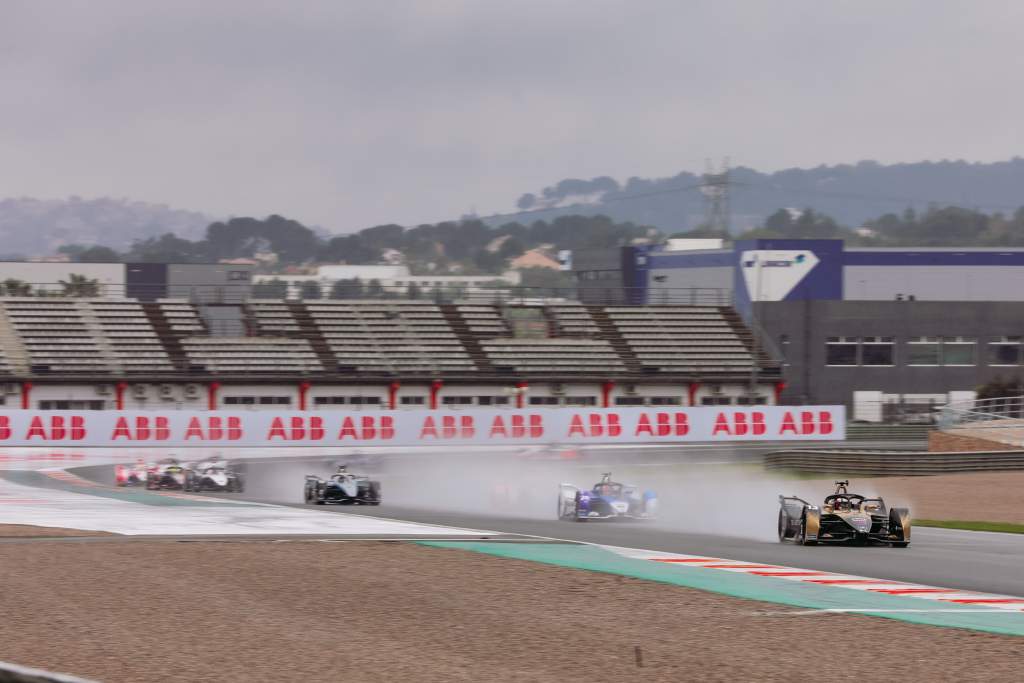Formula E’s Valencia opener was a race like no other and one that confused drivers and even engineers.
Yet there was actually a reasonably simple explanation for why the final laps of today’s Valencia E-Prix descended into what many have already labelled an embarrassing farce.
By the time all the final calculations had been made, only nine cars were classified as finishers.
Of those, Lucas di Grassi, Jake Dennis and Jean-Eric Vergne had slowed so much on their final laps that they were 2m42s, 3m07s and 4m20s respectively behind winner Nyck de Vries.
Oliver Turvey, Tom Blomqvist and Norman Nato all ground to a halt on track. Oliver Rowland, Alexander Sims, long-time leader Antonio Felix da Costa, Alex Lynn and pre-race championship leader Sam Bird were all judged to have gone over the energy limit and were disqualified.
The scenario that led to most of the field running out of energy in the final laps was one The Race can reveal was questioned in Friday’s team managers’ meeting, when concern was raised about the application of the energy reduction rules late in the race – the first in Formula E history held on a full permanent circuit as opposed to a temporary course – by one of the 12 teams.
However, the FIA confirmed this evening that it was stated at this meeting that the usual rule over energy reductions around safety car periods would still be applied, as it was at the previous round in Rome earlier this month.
“The question was raised [at the meeting] on will it be the same call as for Rome,” the FIA’s Frederic Bertrand said after the race.
“To put the safety car out and then to withdraw the energy in case it comes in the last part of the race, and the answer was yes.”
Five safety cars punctuated Saturday’s race, which was essentially spoiled by cars being beached in gravel traps – something which doesn’t usually happen on FE’s regular street circuit venues – necessitating the neutralisation periods.
The finish… but not the finish. This is why energy management is perhaps THE most important aspect of Formula E#DHLValenciaEPrix @DHL_Motorsports pic.twitter.com/nDeYQvK08H
— ABB FIA Formula E World Championship (@FIAFormulaE) April 24, 2021
This engaged the rule that 1kWh would be taken off all cars for each minute under the safety car.
This was initially set out at the June 2019 FIA World Motor Sport Council meeting when the 1kWh per safety car minute deduction was introduced to combat the then increasing trend of flat-out races in which energy management became redundant because teams could save so much during safety cars.
At Valencia, 14kWh had been already taken off as the race was about to come out of its fifth and final safety car, and then an additional 5kWh was removed (meaning 19kWh of the 52 was taken away in total).
With FE races running to a 45 minutes plus one lap duration and the clock counting down, the situation left leader da Costa in particular facing a dilemma over either crawling around to the restart to make the race a one lap dash or going for it and creating a two lap ‘spectacle’.
The saddest part of the story is that an absolutely amazing race has been ruined by a single lap and only that will be remembered #FormulaE
— Daniel Abt (@Daniel_Abt) April 24, 2021
Initially it seemed he was going to achieve the former but it was the latter scenario that transpired and the timing of when he crossed the line ensured the doomed two lap sprint played out.
Essentially, the later in the race a deduction occurs the harder it is to recover for the teams through driving techniques as they have a set 52kWh of useable energy allowed.
“We were telling Antonio to ‘save energy, save energy’,” explained DS Techeetah team principal Mark Preston.
“Obviously Nyck had a little bit more energy so he was able to do the last lap ‘faster’ I’d say.

“It’s a little bit confusing and I think you’ll have to find a better way of explaining exactly how that rule affected us, but as you saw, it affected quite a lot of people on the grid.
“As my engineers were explaining to me, the error margin gets worse at the end of the race.
“If you have a safety car at the beginning of the race you’ve got a lot of time to make up changes along the way, but if it happens right before the last lap, then all your calculations go out the window.”
Most of the cars are believed to have still had 40% state-of-charge (SOC) at the end of the race, which means they had more than enough energy to finish if the 52kWh limit wasn’t in place. Try explaining that to even a seasoned race fan, let alone a casual viewer new to motorsport!
Had the decision been made to deduct 3kWh in the last safety car instead of 5kWh, or even nothing at all, then it would have been the epic sprint to the line everyone was looking forward to.
Article 37.9 of the 2020-21 Formula E sporting regulations states that “the race director has the discretion to cancel this energy subtraction if deemed necessary”.

Instead what we got was the image damaging sight of zombie cars stopping on the track as if they ran out of range.
In short, the wrong call was made. But in the context of the race being held in difficult conditions and being neutralised multiple times, hindsight has to play a factor in any analysis of the series of events that led up to the finish.
Still, you don’t need to be a technical expert to understand that for the manufacturers spending multi-millions of pounds to evidence the quality and longevity of current and future EV technology, that this was a toe-curling and embarrassing heads-in-hands moment whichever way you dressed it up.
For da Costa’s part he was unequivocal in his opinion that the final 5kWh reduction was too extreme.
Me in the last lap pic.twitter.com/JSsulhmQsF
— Antonio Felix da Costa (@afelixdacosta) April 24, 2021
“The rules are the rules, and the FIA have [applied] something that is correct to the rules,” the reigning champion told The Race.
“But late on in the race like that, to do an energy reduction so extreme on an already very difficult circuit in those kind of circumstances made it impossible for 95% of the cars to finish the race.”
Immediately after the race the reaction up and down the pitlane was consistent puzzlement.
This was not a good look for Formula E, and irrespective of it racing on a permanent track for the first time, and for TV viewers across the globe (on the last weekend for now of its run of not clashing with Formula 1) it left a fog of confusion that could not adequately nor immediately be explained by TV commentators let alone the racers themselves.

“It probably looked a little bit silly to be honest,” said third-placed finisher Stoffel Vandoorne when asked by The Race how the image of the championship may have been perceived today.
“To finish the race like that is kind of not the way that you want the race to finish. You want the race to finish with proper racing and everyone being close together.
“We knew there was a possibility and there was this slight chance that this would have happened and it was just probably in that window where this happened.”





